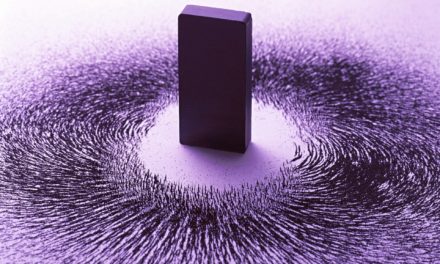Electricity and Electromagnetism
Can we even imagine a world without electricity? But as unimaginable it may sound to us now, the story of electricity for practical use has been around for only few centuries. Most modern uses of electricity rely on electrons that move. Newton’s first law of motion demands that electrons can’t move unless a force is applied. A method for applying such a force was discovered in 1794, when the Italian physicist Alessandro Volta (1745–1827) invented the battery. Alessandro Giuseppe Antonio Anastasio Volta was born to an impoverished family in northern Italy. He showed a flair for foreign languages and began experimental studies on electricity while still a teenager. He spent his career as professor of physics at the University of Pavia.
Volta’s most important contributions followed discoveries of his countryman, the anatomist Luigi Galvani (1737–1798), who focused much of his work on the subject of animal electricity. Galvani studied the effects of electric sparks, which caused the muscular legs of dead frogs to twitch and convulse. While performing these experiments he noticed the leg would twitch when touched simultaneously by a brass wire and a steel scalpel. Further experiments clarified this phenomenon. Galvani showed that when copper and iron wires were inserted into different parts of a dead frog’s legs, and these two wires were then touched together, the legs would convulse. The anatomist Galvani interpreted this phenomenon in terms of “animal electricity,” an electricity intrinsic to biological tissues.
The physicist Volta directed his attention to these phenomena, focusing more on the metallic elements of Galvani’s experiment than the biological components. He soon became convinced that the juxtaposition of two different metals led to the observed electrical phenomena, which he called “metallic electricity.” He found that different pairs of metal produced different degrees of effect. A feud developed between supporters of Galvani’s animal electricity and Volta’s metallic electricity.
Volta’s view soon prevailed because his electrical effects could be produced independently of frog’s legs or other biological material. Electrical potential is analogous to the gravitational potential of water behind a dam. For Volta, the next step was to devise various arrangements by which different metals were placed in contact. He found that he could produce electricity just by stacking alternating plates of metals, such as silver and zinc, in a saltwater bath. Volta’s battery marked a turning point in electrical science. For the first time, researchers could rely on a steady source of electricity, rather than transient sparks and discharges.
Volta’s battery and its successors proved invaluable in chemical experiments. Within weeks of its announcement, the British chemists William Nicholson and Anthony Carlisle built a crude battery, and they used it to decompose water into hydrogen and oxygen for the first time. Batteries were used to decompose other substances, leading to the discovery of several new elements. Larger batteries were built with more pairs of metal plates. The flamboyant English chemist and science lecturer Humphry Davy constructed a mammoth battery with 2000 double plates at the Royal Institution. In 1810, he became the first person to demonstrate electric lighting when he vaporized charcoal, platinum, and other materials in blinding incandescent displays.
The battery introduced a new field of research on electric currents and electric circuits. An electric circuit incorporates three components: a source of electrical energy, a device that responds to this electrical potential, and a closed loop of conducting material. The source of electrical energy might be a battery, a solar cell, or a hydroelectric plant. An electrical device is an object or substance that responds in some interesting or useful way to the voltage of the source. A piece of wire or other conducting material is required to close the loop of an electric circuit. Electric currents are produced by moving electrons in a closed path.
Electrical circuits can be quantified in several useful and important ways. The flow of electrons through a circuit is called an electric current, measured in amperes. The electrical potential that causes electrons to move is measured in volts, in honor of Volta. Every circuit has some resistance to the flow of electrons, measured in ohms. Power is defined as work divided by time. In an electrical circuit, power is the current times the voltage and is measured in watts.
In homes, the energy source is typically a power plant many miles away. The separate circuits in your home that feed off this power network are of two types. Series circuits have several devices, each linked up after the next in a single large loop. The same current flows through every device. Parallel circuits are arranged so that a single source supplies voltage to separate loops, each dedicated to one device. Every device sees the same voltage, but different currents. Kirchhoff’s Laws systematize the behavior of circuits.
Kirchhoff’s first law is a restatement of the law of energy conservation: energy produced by the source equals the energy consumed in the circuit (including heat energy of resistance). The second law is a statement of conservation of current: the current flowing into any junction equals the sum of the currents flowing out. Since current is simply the number of electrons flowing past a point, this law is equivalent to saying that electrons are conserved. The word electricity has been introduced in many different contexts: animal electricity, metallic electricity, static electricity, lightning, and so forth.
British physicist Michael Faraday (1791–1867) showed that all forms produce the same effects, and thus united the many faces of electricity. The unification of electricity with the seemingly unrelated force of magnetism transformed the world’s technology. It is no exaggeration to call Faraday as a modern Prometheus who gifted humanity with the gift of light through his work on electricity and magnetism.
….. Continued on Part 2
Electricity and Electromagnetism – Part 2







